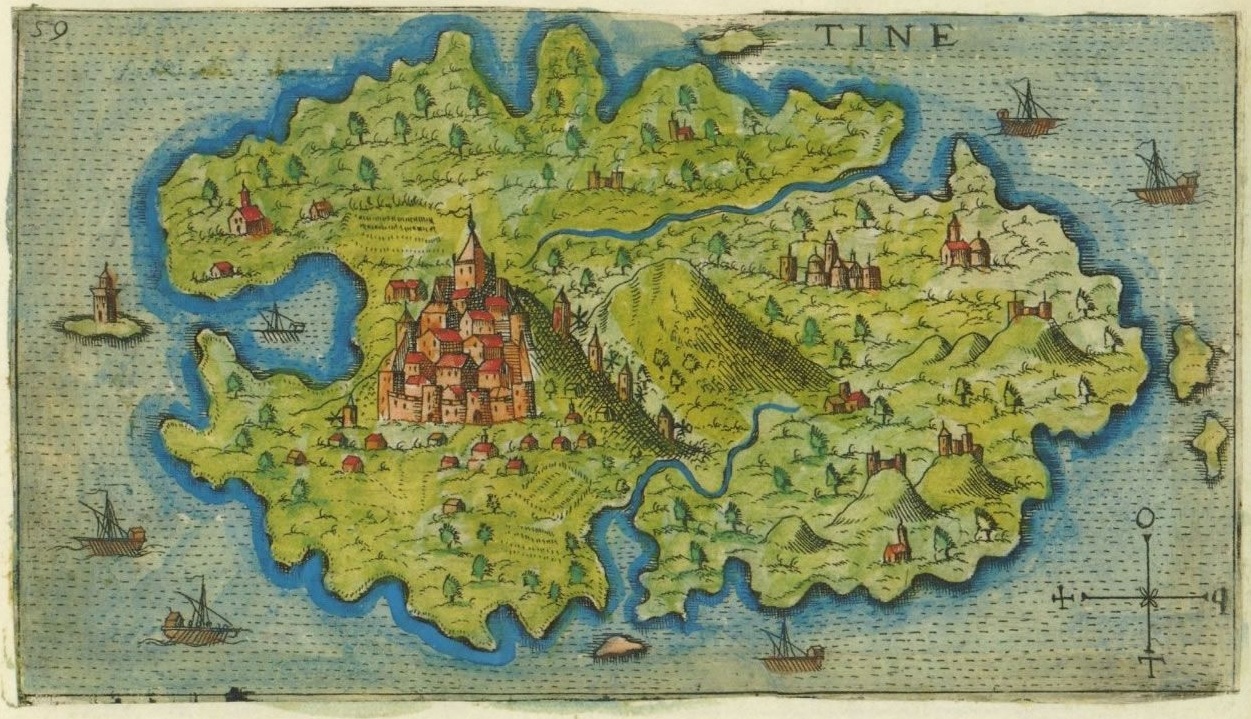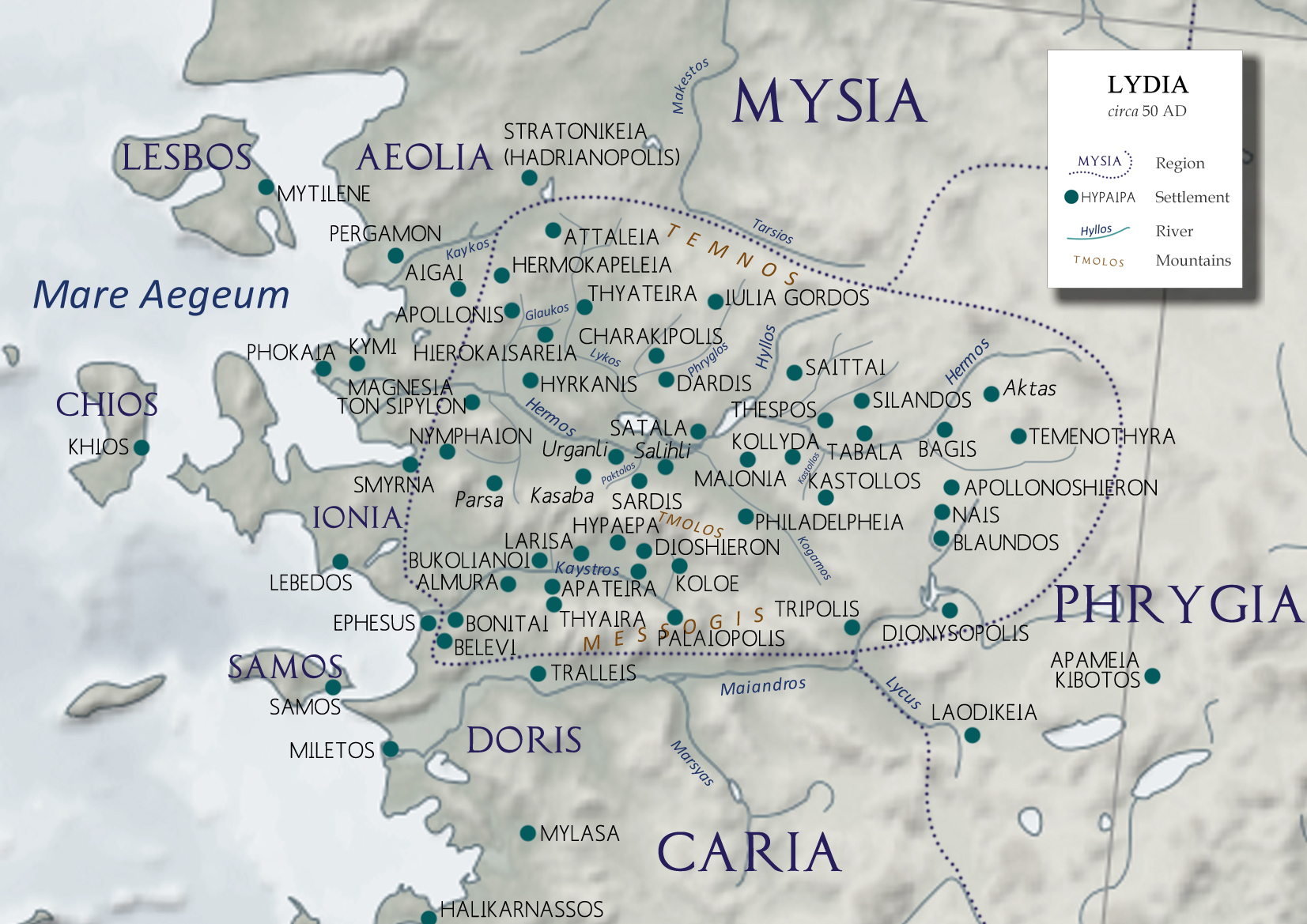|
Nikiforos Lytras
Nikiforos Lytras (; 1832 – 13 June 1904) was a Greek painter. He was born in Tinos and trained in Athens at the School of Arts. In 1860, he won a scholarship to Royal Academy of Fine Arts of Munich. After completing these studies, he became a professor at the School of Arts in 1866, a position he held for the rest of his life. He remained faithful to the precepts and principles of the Munich School, while paying greatest attention both to ethnographic themes and portraiture. His most famous portrait was of the royal couple, Otto and Amalia, and his most well-known landscape a depiction of the region of Lavrio. Biography Nikiforos Lytras was the son of a popular marble sculptor. In 1850, at the age of eighteen years he went to Athens to study in the School of Arts. He studied painting with Ludwig Thiersch and Raffaelo Ceccoli (c.1800-after 1860). After graduating in 1856, he began teaching an elementary course in writing. In 1860 with a Greek government's scholarship he ... [...More Info...] [...Related Items...] OR: [Wikipedia] [Google] [Baidu] |
Tinos
Tinos ( ) is a Greek island situated in the Aegean Sea. It forms part of the Cyclades archipelago. The closest islands are Andros, Delos, and Mykonos. It has a land area of and a 2021 census population of 8,934 inhabitants. Tinos is famous amongst Greeks for the Church of Our Lady of Tinos, Panagia Evangelistria, for the island's 80 or so windmills, for about 1,000 artistic dovecotes, for 50 active villages and for the Republic of Venice, Venetian fortifications on the mountain Exomvourgo. On Tinos, both Greek Orthodox and Catholic populations co-exist, and the island is also well known for its sculptors and painters, such as Nikolaos Gysis, Yannoulis Chalepas and Nikiforos Lytras. The island is located near the geographical center of the Cyclades islands complex, and because of the Panagia Evangelistria church, with the reputedly miraculous icon of Virgin Mary that it holds, Tinos is also the center of a yearly pilgrimage that takes place on the date of the Dormition of the ... [...More Info...] [...Related Items...] OR: [Wikipedia] [Google] [Baidu] |
Smyrna
Smyrna ( ; , or ) was an Ancient Greece, Ancient Greek city located at a strategic point on the Aegean Sea, Aegean coast of Anatolia, Turkey. Due to its advantageous port conditions, its ease of defence, and its good inland connections, Smyrna rose to prominence. Since about 1930, the city's name has been İzmir. Two sites of the ancient city are today within İzmir's boundaries. The first, probably founded by indigenous peoples, rose to prominence during the Archaic period in Greece, Archaic Period as one of the principal ancient Greek settlements in western Anatolia. The second, whose foundation is associated with Alexander the Great, reached metropolitan proportions during the period of the Roman Empire. Most of the ancient city's present-day remains date to the Roman era, the majority from after a 2nd-century AD earthquake. In practical terms, a distinction is often made between these. ''Old Smyrna'' was the initial settlement founded around the 11th century BC, first as an ... [...More Info...] [...Related Items...] OR: [Wikipedia] [Google] [Baidu] |
Greek History
The history of Greece encompasses the history of the territory of the modern nation-state of Greece as well as that of the Greek people and the areas they inhabited and ruled historically. The scope of Greek habitation and rule has varied throughout the ages and as a result, the history of Greece is similarly elastic in what it includes. Timeline Generally, the history of Greece is divided into the following periods: *Prehistoric Greece: ** Paleolithic Greece, starting circa 3.3 million years ago and ending in 20,000 BC. Significant geomorphological and climatic changes occurred in the modern Greek area which were definitive for the development of fauna and flora and the survival of ''Homo sapiens'' in the region. **Mesolithic Greece, starting in 13,000 BC and ending around 7,000 BC, was a period of long and slow development of primitive human "proto-communities". **Neolithic Greece, beginning with the establishment of agricultural societies around 7,000 BC and ending BC, was ... [...More Info...] [...Related Items...] OR: [Wikipedia] [Google] [Baidu] |
Greek Mythology
Greek mythology is the body of myths originally told by the Ancient Greece, ancient Greeks, and a genre of ancient Greek folklore, today absorbed alongside Roman mythology into the broader designation of classical mythology. These stories concern the ancient Greek religion's view of the Cosmogony, origin and Cosmology#Metaphysical cosmology, nature of the world; the lives and activities of List of Greek deities, deities, Greek hero cult, heroes, and List of Greek mythological creatures, mythological creatures; and the origins and significance of the ancient Greeks' cult (religious practice), cult and ritual practices. Modern scholars study the myths to shed light on the religious and political institutions of ancient Greece, and to better understand the nature of mythmaking itself. The Greek myths were initially propagated in an oral tradition, oral-poetic tradition most likely by Minoan civilization, Minoan and Mycenaean Greece, Mycenaean singers starting in the 18th century&n ... [...More Info...] [...Related Items...] OR: [Wikipedia] [Google] [Baidu] |
History Painting
History painting is a genre in painting defined by its subject matter rather than any artistic style or specific period. History paintings depict a moment in a narrative story, most often (but not exclusively) Greek and Roman mythology and Bible stories, opposed to a specific and static subject, as in portrait, still life, and landscape painting. The term is derived from the wider senses of the word ''historia'' in Latin and ''histoire'' in French, meaning "story" or "narrative", and essentially means "story painting". Most history paintings are not of scenes from history, especially paintings from before about 1850. In modern English, "historical painting" is sometimes used to describe the painting of scenes from history in its narrower sense, especially for 19th-century art, excluding religious, mythological, and allegorical subjects, which are included in the broader term "history painting", and before the 19th century were the most common subjects for history paintings. ... [...More Info...] [...Related Items...] OR: [Wikipedia] [Google] [Baidu] |
Georgios Jakobides
Georgios Jakobides (Greek: Γεώργιος Ιακωβίδης; 11 January 1853 – 13 December 1932) was a Greek painter and medallist, one of the main representatives of the Greek artistic movement of the Munich School. He founded and was the first curator of the National Gallery of Greece in Athens. Life He was born in Chidira, Lesbos. At the age of 13, he traveled to Smyrna to live with his uncle and study at the Evangelical School. From 1870 to 1876, Jakobides studied sculpture and painting at the Athens School of Fine Arts under Nikiphoros Lytras, and in 1877 he went to the Academy of Fine Arts in Munich on a scholarship to continue his painting studies under Ludwig von Lofftz, Wilhelm Lindenschmidt and Gabriel von Max. In Munich, he lived for 17 years where he worked in his studio, painting mythological scenes, genre pictures, and portraits. His work is influenced by German academic Realism. His most famous paintings were depictions of children, but he was also ... [...More Info...] [...Related Items...] OR: [Wikipedia] [Google] [Baidu] |
Ioannis Altamouras
Ioannis Altamouras (Greek: Ιωάννης Αλταμούρας) (1852, in Florence or Naples – 1878, in Spetses) was a Greek painter of the 19th century famous for his paintings of seascapes.Bank of Greece – Events Biography Altamouras's father was the Italian painter , and his mother was the aristocrat and first Greek female painter from ,[...More Info...] [...Related Items...] OR: [Wikipedia] [Google] [Baidu] |
Picasso
Pablo Diego José Francisco de Paula Juan Nepomuceno María de los Remedios Cipriano de la Santísima Trinidad Ruiz y Picasso (25 October 1881 – 8 April 1973) was a Spanish painter, sculptor, printmaker, Ceramic art, ceramicist, and Scenic design, theatre designer who spent most of his adult life in France. One of the most influential artists of the 20th century, he is known for co-founding the Cubist movement, the invention of Assemblage (art), constructed sculpture, the co-invention of collage, and for the wide variety of styles that he helped develop and explore. Among his most famous works are the Proto-Cubism, proto-Cubist ''Les Demoiselles d'Avignon'' (1907) and the anti-war painting ''Guernica (Picasso), Guernica'' (1937), a dramatic portrayal of the bombing of Guernica by German and Italian air forces during the Spanish Civil War. Beginning his formal training under his father José Ruiz y Blasco aged seven, Picasso demonstrated extraordinary artistic talent from a ... [...More Info...] [...Related Items...] OR: [Wikipedia] [Google] [Baidu] |
Braque
Georges Braque ( ; ; 13 May 1882 – 31 August 1963) was a major 20th-century French painter, collagist, draughtsman, printmaker and sculptor. His most notable contributions were in his alliance with Fauvism from 1905, and the role he played in the development of Cubism. Braque's work between 1908 and 1912 is closely associated with that of his colleague Pablo Picasso. Their respective Cubist works were indistinguishable for many years, yet the quiet nature of Braque was partially eclipsed by the fame and notoriety of Picasso. Early life Georges Braque was born on 13 May 1882 in Argenteuil, Val-d'Oise. He grew up in Le Havre and trained to be a house painter and decorator like his father and grandfather. However, he also studied artistic painting during evenings at the École supérieure d'art et design Le Havre-Rouen, previously known as the École supérieure des Arts in Le Havre, from about 1897 to 1899. In Paris, he apprenticed with a decorator and was awarded his ce ... [...More Info...] [...Related Items...] OR: [Wikipedia] [Google] [Baidu] |
Demetrios Galanis
Demetrios Galanis (, 17 May 1879, Athens – 20 March 1966, Paris) was an early twentieth-century Greek artist and friend of Picasso. In 1920, the year he completed his ''Seated Nude'' (private collection), he exhibited alongside such major figures of modern art as Matisse and Braque, while from 1921 on he also exhibited alongside Juan Gris, Dufy, Chagall, and Picasso. By the early 1920s Galanis was famous in France and preparing for shows in Brussels, London, and New York. In 1920–21 he frequently exhibited in Paris and in 1922 his first one-man exhibition received the enthusiastic critical response that established his reputation. ''Seated Nude'' was among the pictures exhibited, and in an introduction to the exhibition André Malraux described the artist's work as "having the power to stir emotions equivalent to that of Giotto." This show established Galanis’s reputation as a painter and confirmed the favourable opinions already expressed on the quality of his work. ... [...More Info...] [...Related Items...] OR: [Wikipedia] [Google] [Baidu] |





